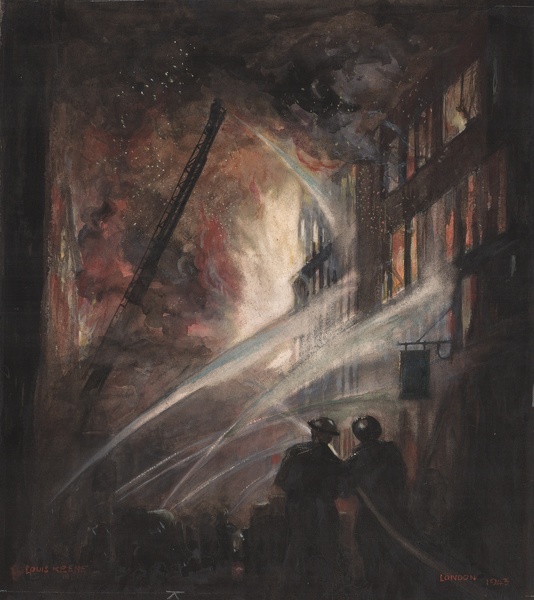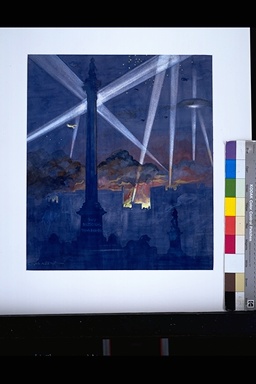
 SOLD
SOLD
Louis Keene:
Fire services, London, circa 1941
Framed (ref: 7255)
Signed
Watercolour, india ink, pencil, and chalk 13 1/2 x 15 1/4 in. (34.2 x 38.7 cm)
Tags: Louis Keene chalk ink pencil watercolour war World War II Paintings by British Artists
Provenance: The Artists daughter, Canada.
Exhibited: WW2 - War Pictures by British Artists, Morley College London, 28 October -23 November 2016, cat 33.
Literature: WW2 - War Pictures by British Artists, Edited by Sacha Llewellyn & Paul Liss, July 2016, cat 33, page 70.
As Commanding Officer of the Lorne Scots during WW2 Keene witnessed the bombing of Liverpool and London. According to an article in the Evening Standard (May 29, 1942), his paintings, including a vivid incendiary bomb picture were included in the National Gallery show of May 1942. His obituary (Oakville, 8 May 1972) reported, While in England Col. Keene did some paintings of the air raids and these were later purchased by the British government. Some of his wartime paintings were also sold to the Canadian government.
Favouring nighttime views, (illuminated by searchlights, fires and bombs) his pictures are often characterised by a surreal feeling, heightened by the use of shallow perspectives and intense colours.
NELSON WONDERS; TRAFALGAR SQUARE, LONDON, 1940;
Canadian War Museum
.jpeg)
"The Awakening"; Liverpool. May, 1941.
When it became clear in the late 1930s that another major European war was
not far off, Parliament passed the Air Raid Precautions Act in 1937. This
obliged local authorities to organise all of the services that would be needed
to protect their towns and the civilian population in the event of war. Naturally
it was realised that the Fire Services would need augmenting and the
Auxiliary Fire Service was established. Training and equipment was provided,
but it was not until 1941 that uniformity of equipment was achieved in order to
avoid the possibility that when county teams were called in to a major city,
which had suffered an attack, it was certain that their hose pipes would
connect to the city's water mains. The 1,450 separate Fire Brigades were
consolidated into 38 Fire Forces and re-titled the National Fore Service during
the Summer of 1941.
In this dramatic picture well-equipped firemen with extension ladders are
tackling a blaze that could be in London, though such scenes were typical in
many other industrial cities and towns across the country. Both the Luftwaffe
and the RAF used High Explosives to open-up buildings by smashing the
roofs and all the windows, accompanied by incendiaries to ignite the wooden
structures and the contents. The opening of the building ensured that a
constant draft fed the flames with the oxygen necessary for continuous
combustion.









.jpeg)